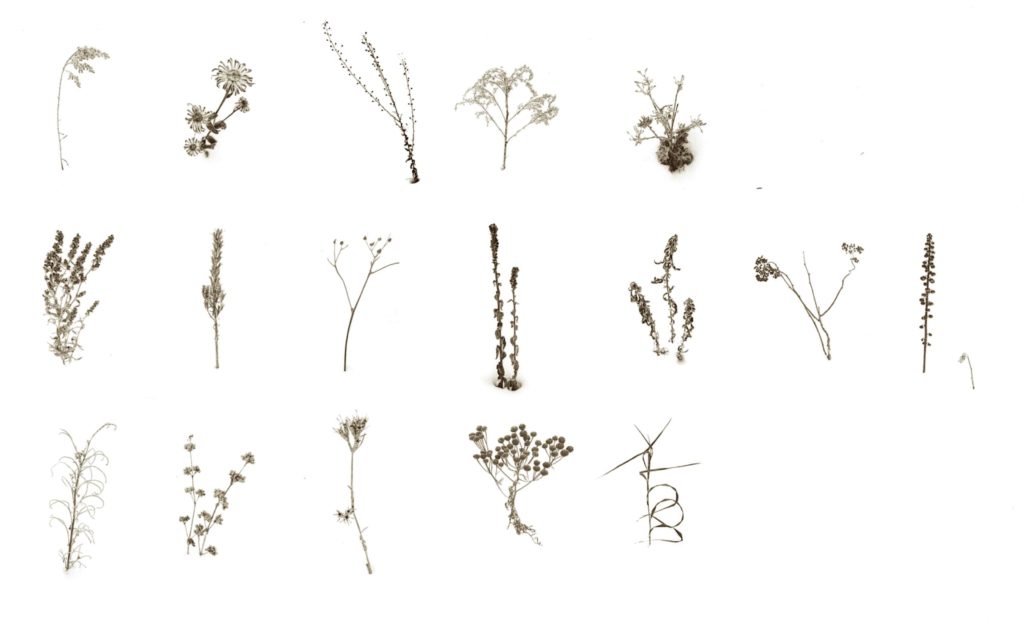
Winter Weed Haiku


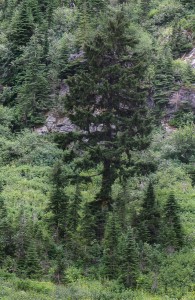 When I was a child, growing up in Colorado, I went on a field trip to the Natural History Museum in Denver. While most of the other kids were drawn to the dinosaur skeletons, I wondered off, completely entranced by what the others considered a ho-hum diorama. Behind the glass was a window into what lay beneath the surface of the earth. There were the rodent tunnels and the centipedes and earth worms but what really caught my attention were the complex network of roots reaching down and branching out all over from plants and trees. My father was a geologist and made colorful geologic maps, so I was familiar with the idea that there were layers of different kinds of rocks hidden beneath the soil. But until then I didn’t realize how much life was going on out of sight beneath my feet.
When I was a child, growing up in Colorado, I went on a field trip to the Natural History Museum in Denver. While most of the other kids were drawn to the dinosaur skeletons, I wondered off, completely entranced by what the others considered a ho-hum diorama. Behind the glass was a window into what lay beneath the surface of the earth. There were the rodent tunnels and the centipedes and earth worms but what really caught my attention were the complex network of roots reaching down and branching out all over from plants and trees. My father was a geologist and made colorful geologic maps, so I was familiar with the idea that there were layers of different kinds of rocks hidden beneath the soil. But until then I didn’t realize how much life was going on out of sight beneath my feet.
Fast forward 50 years and we now know a great deal more about what is happening just under the surface of the ground we tread. Plant biologists have found that not only do roots sense gravity, and will inevitably grow down into the earth, even if the seed is oriented upside down, they also can sense, and respond to chemical signals from other plants, whether of their own species or another. In fact, in recent years botanists have discovered that plants can signal each other, exchanging nutrients and information through their roots. Suzanne Simard and her colleagues from of the University of British Columbia have mapped out complex networks of roots, connected by mycorrhizal fungi which transmit chemical signals. They even showed how older, or mother trees used the network to nourish their young and that they can recognize those trees who are their descendants.
Looking at this mother tree surrounded by her offspring, I could almost feel the vibrations in the earth, and as I imagined the web of connection beneath the soil, that wonder I first felt at the Natural History Museum was rekindled.
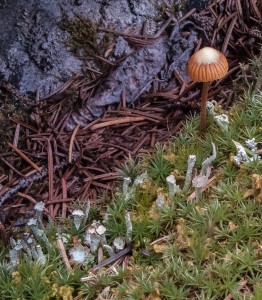 There is a place in the backwoods, down near the river where the trees open into a clearing and the clearing is carpeted in moss. I refer to it as the dying place because often when I go back there a new deer carcass has appeared, hide and bones scattered here and there. It feels like a sacred place, but not a sad place. In spite of the death that happens here, it is such a beautiful, gently quiet place. It’s the perfect place to sit on the soft cushion of moss and listen to the river and watch the herons going back and forth from the rookery, sometimes with gleaming fish in their needle long beaks.
There is a place in the backwoods, down near the river where the trees open into a clearing and the clearing is carpeted in moss. I refer to it as the dying place because often when I go back there a new deer carcass has appeared, hide and bones scattered here and there. It feels like a sacred place, but not a sad place. In spite of the death that happens here, it is such a beautiful, gently quiet place. It’s the perfect place to sit on the soft cushion of moss and listen to the river and watch the herons going back and forth from the rookery, sometimes with gleaming fish in their needle long beaks.
It is also an ideal place to get lost in the miniature world of the moss forest. Robin Wall Kimmerer’s book Gathering Moss has opened my eyes to the complex ecosystem under my feet and opened my mind to a new way of relating to the natural world. Her book is a combination of science and personal reflection, born out of her life as both a scientist and as a Native American writer who experiences the world within the framework of indigenous ways of knowing.
She writes: “In indigenous ways of knowing, we say that a thing cannot be understood until it is know by all four aspects of our being: mind, body, emotion, and spirit. The scientific way of knowing relies only on empirical information from the world, gathered by body and interpreted by mind. In order to tell the mosses’ story I need both approaches, objective and subjective. These essays intentionally give voice to both ways of knowing, letting matter and spirit walk companionably side by side. And sometimes even dance.”
With her encouragement I have taken small samples of the moss back to the house and placed them under the microscope, which allows me to wander at will through the stems, branches and leaves of the moss. There I have an ant’s eye perspective and I’m able to wander in this intimate forest, not in search of answers to any specific questions, but as an explorer open to whatever discoveries I might stumble upon. This is the joy of being an amateur naturalist and not a professional scientist. I am not trying to probe and prod data from the moss, I am simply listening to whatever it has to tell me. I love what Kimmerer says about learning in traditional indigenous communities.
“Learning takes a form very different from that in the American public education system. Children learn by watching, by listening, and by experience. They are expected to learn from all members of the community, human and non. To ask a direct question is often considered rude. Knowledge cannot be taken; it must be given…Much learning takes place by patient observation, discerning pattern and its meaning by experience.”
As I peered into the world revealed under the microscope’s lens, I found a different way of learning, “to let the mosses tell their story, rather than wring it from them.” It is way of learning I hope to carry out into my other explorations of the backwoods and beyond.
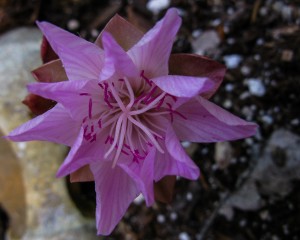 It is the Bitterroot blooming time in Missoula. Their appearance signals the end of the harvesting season for these roots that were one of the main staples in the Native American diet in the region. The fleshy green shoots of rosettes began appearing on the rocky hillsides around town soon after the snow began to melt, beating out even the earliest flowers. The Native Americans traditionally dug the root in May, before the rosette withers away and the flower blooms, because afterwards the woody brown skin on the root is difficult to remove. Among the Flathead and Kutenai Indians of western Montana, a special ceremony honored the Bitterroot and opened the root and berry picking season. Early settlers reported great gatherings of Flathead, Kalispell, Pend d’Oreille, Spokane and Nez Perce tribes camped in the Missoula valley to collect the roots.
It is the Bitterroot blooming time in Missoula. Their appearance signals the end of the harvesting season for these roots that were one of the main staples in the Native American diet in the region. The fleshy green shoots of rosettes began appearing on the rocky hillsides around town soon after the snow began to melt, beating out even the earliest flowers. The Native Americans traditionally dug the root in May, before the rosette withers away and the flower blooms, because afterwards the woody brown skin on the root is difficult to remove. Among the Flathead and Kutenai Indians of western Montana, a special ceremony honored the Bitterroot and opened the root and berry picking season. Early settlers reported great gatherings of Flathead, Kalispell, Pend d’Oreille, Spokane and Nez Perce tribes camped in the Missoula valley to collect the roots.
Lewis and Clark encountered the plant in the Big Hole Valley in 1805. Captain Lewis tried the boiled roots, finding them quite soft, but complained that they had a bitter, nauseating taste. The first time I tried the Bitterroot I too found them bitter, but I rather liked their astringent taste. Bitters have long been used as a way to stimulate the digestive juices and given the Native American’s meat heavy diet, I imagine that the roots were very beneficial.
Jeff Hart, in his priceless book Montana—Native Plants and Early Peoples recounts one of the origin stories of the plant: “Long ago, as the story goes, in what we now call the Bitterroot Valley, Flathead Indians were experiencing a famine. One old woman had to meat or fish to feed her sons. All they had to eat were shoots of balsamroot, and even these were old and woody. Believing that her sons were slowly starving to death, she went down to the river early one morning to weep alone and sing a death song. The sun, rising above the eastern mountains, heard the woman singing. Taking pity on the old woman, the sun sent a guardian spirit in the form of a red bird to comfort her with food and beauty. The bird flew to the old, gray-haired woman and spoke softly. ‘A new plant will be formed,’ said the bird, ‘from you sorrowful tears which have fallen into the soil. Its flower will have the rose of my wing feathers and the white of your hair. It will have leaves close to the ground. Your people will eat the roots of this plant. Though it will be bitter from your sorrow, it will be good for them. When they see these flowers they will say, here is the silver of mother’s hair upon the ground and rose from the wings of the spirit bird. Our mother’s tears of bitterness have given us food…’”
Even as a twenty first century white woman, when I see the blossoms of the Bitterroot, I feel a deep emotional connection to this mother’s story. But more than that, I am struck by the world view this story illuminates. The idea that the natural world is responsive to us in such an nurturing way is so different from our western view of nature being at best indifferent to us, or, at worst, if it does respond it is always in a violent, revengeful way (you shouldn’t fool with mother nature!) What if nature really is both responsive and benevolent and interconnected to us in such an intimate way? It certainly is worth further exploration and reflection.
I am eight years old, hiking through the meadow, slogging along behind my mother’s long strides. We stop at a clump of columbine, their sky blue petals offset the crisp white centers folded into elaborate origami shapes. It is the flower that means home to me—the Colorado mountains and their secrets enfolded its form like the magic phrases of the cooty catchers we make in school. I reach out to pick one, a columbine of my own to place in a rusty tin can and set in my room, a way to bring the mountains home with me. But my mother’s hand stays my own.
“Don’t pick the flowers,” she says. “We have to leave them for others to enjoy.”
I look across the acres of meadow around me. We have not seen another soul since we camped here a week ago. The meadow is blue speckled with clumps of columbine as far as the eye can see. I don’t understand. Why can’t I take just one? Why can’t I hold onto this symbol of the perfect week for awhile anyway?
I don’t want to go home, back to the city and my friends and school and all the little dramas that play out among a group of preteen girls. I want to hold on to this week of sleeping in the silent woods, listening for the stirrings of a world beyond the human one. I want to run across the meadow and feel the freedom of it, not go back to the playground where I never run for freedom, but in competition against the others, trying to prove myself. I want to stay here where I do adult tasks, where I saw logs and chop wood and build fires. I want to live in clothes saturated in woodsmoke and let my long hair tangle and mat, my tennis shoes get crusted in fine red dust. I don’t want to go home where I have to wash the earth from my body and put on stiff clean clothes and skirts that restrict what I can do and try to make my flyaway hair conform to some style from a teen magazine.
I defy my mother’s prohibition. I pick the flower, soak a kleenex in the cold little creek and wrap it around the stem. My mother says nothing. When we get back to camp she gives me a water bottle to prop it up in.
But by the time we home, the columbine has wilted, tucking all the mountain’s secrets into its crushed petals.
First sign of spring in the forests and meadows, it blossoms even before the last patches of snow have pulled back. It’s creamy yellow petals flash in the gray brown tangle of dried grasses, fallen pine needles and melt-soggy soil. They are so small they would probably go unnoticed but for their neon color.
When I was a child we would pluck the blossoms and hold them under our chins. If the bright saffron hue reflected on our skin, childhood folklore said we were fiends for butter. Invariably mine would glow, for there is nothing I love more than thick pats of butter melting into crispy warm bread, or a scoop of melted butter pooled on the end of an artichoke leaf.
One common name for a species of buttercup is “ugly buttercup,” but it is hardly ugly. It may not have the flash of the shooting star, or the elegant swoop of yellow bells, or the exotic glamor of the glacier lily. But those flowers come weeks later, allowing the buttercup to answer our eagerness for spring. Their five shiny petals are created by an underlying layer of white starch which reflects light back through the yellow pigment, making them look like drops of liquid sunlight. The Navajo are said to make a tea from the leaves to protect hunters against dangerous animals, which reminds us when we see the buttercup bloom, the bears are leaving their dens.
We might, later in the season overlook them altogether amongst the abundance and rainbow colors of the summer wildflowers. But it is because they are first, because they grow in great spreading clumps that splash the hillsides with gold, because they are such a welcome contrast on gray cloudy, gumbo mud days in late March, that we so avidly seek them out. Proving, I suppose, that even the most ordinary and unremarkable can be something extraordinary if it finds a way to stand out from the crowd.
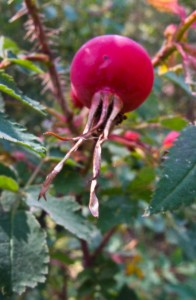 Today, while my husband prepares for his annual hunting trip, I am up at the homestead gathering. As convenient as my garden is, right out my front door with its neat rows of produce ready for the picking, its domesticated flavors can’t compare to the wild tanginess of a berry foraged from the forest. Half the experience of eating a huckleberry or spreading thimbleberry jelly over your toast is the memory of finding it–the day spent in the mountains taking careful notice of things, discovering not only the berries you were seeking, but stumbling upon the carefully built midden an industrious chipmunk has gathered against the winter snow.
Today, while my husband prepares for his annual hunting trip, I am up at the homestead gathering. As convenient as my garden is, right out my front door with its neat rows of produce ready for the picking, its domesticated flavors can’t compare to the wild tanginess of a berry foraged from the forest. Half the experience of eating a huckleberry or spreading thimbleberry jelly over your toast is the memory of finding it–the day spent in the mountains taking careful notice of things, discovering not only the berries you were seeking, but stumbling upon the carefully built midden an industrious chipmunk has gathered against the winter snow.
I read recently that women are better suited to gathering than men. It seems that we see colors more vividly than the guys and I wonder then, what the world looks like through their eyes, slightly less saturated, a bit duller perhaps.
 Anyway, on this fine summer day I am gathering rosehips to dry in the sun–a winter’s bounty of vitamin C rich tea. And of course, a few kept by to make a rose hip cake. When the boys were little and we spent our summers rangering in Glacier Park, their favorite stories were the Broughton Bear books, by Susan Atkinson-Keen. The main character was a little boy who lived in a cabin in the wild, just like my sons. And the boy in the stories lived with a grandfatherly bear who took him out in the woods to share some natural history and gathering adventure which always ended in the preparation of food, recipe included. Thus began our tradition of gathering the fat red rosehips to make a summer rich treat in the middle of winter.
Anyway, on this fine summer day I am gathering rosehips to dry in the sun–a winter’s bounty of vitamin C rich tea. And of course, a few kept by to make a rose hip cake. When the boys were little and we spent our summers rangering in Glacier Park, their favorite stories were the Broughton Bear books, by Susan Atkinson-Keen. The main character was a little boy who lived in a cabin in the wild, just like my sons. And the boy in the stories lived with a grandfatherly bear who took him out in the woods to share some natural history and gathering adventure which always ended in the preparation of food, recipe included. Thus began our tradition of gathering the fat red rosehips to make a summer rich treat in the middle of winter.
ROSE HIP CAKE
2 cups dried rose hips
1 cup water
blob of butter
2 eggs
1 cup sugar
1 cup flour
1 tsp. baking powder
Cover and simmer rose hips in water for 20 minutes. Strain to remove seeds, hairs, and pulp. Set aside 1/2 cup of this juice with a blob of butter.
Beat eggs in large bowl. Beat in sugar. Add flour, baking poweder, and hip juice. Mix well. Pour into greased 8″x8″ pan and bake 25 minutes at 350 degrees. Remove from oven.
Topping
3 tbls. butter
3 tbls. brown sugar
2 tbls. cream
1/2 cup sliced almonds
Mix topping in small pot and heat until butter melts. Pour over cake, then brown slightly under the broiler.
Enjoy!